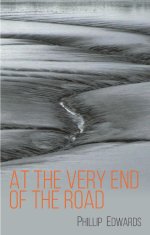ANY birder who lives near an estuary will immediately identify with Phillip Edwards, author of At The Very End of The Road.
The book's cast of characters is familiar - knot, dunlin, curlew, redshank, grey plover, merlin, shelduck, little egret and many more.
The setting is unspecified but it could be the Humber, the Wash, the Severn, or any other of a number of estuary locations. It is up to the reader to work out the clues.
It is a beautifully-written study in which Edwards brilliantly captures the sights and sounds that greet him every time he steps out of his front door.
It is a bleak and remote landscape, and he does not shy away from acknowledging its downsides - at low tide a vast expanse of oozing mud where the far-out sea is a "diseased brown".
An estuary is, as he describes it, "a place instilled with fear and unease where people have drowned trying to walk on its treacherous soft sucking surface".
Yet the author finds beauty and magic all around, bringing his world vividly to life with many colourful descriptions - for instance, the song of a skylark "expanding the sky", a heron flying with "heavy elegance imparted by purposeful wing beats" and a lone curlew "fleeing the haunting desolation of its own call".
The author is a retired ornithological consultant whose work took him to many exotic places - no fewer than 106 countries on seven continents.
How typically English (ie quirky) that, in retirement, he is enjoying perhaps the greatest contentment of his life birding in a location where mudflats stretch almost to the horizon.
At The Very End of The Road is published at £16.99 in paperback by Whittles Publishing.
The book's cast of characters is familiar - knot, dunlin, curlew, redshank, grey plover, merlin, shelduck, little egret and many more.
The setting is unspecified but it could be the Humber, the Wash, the Severn, or any other of a number of estuary locations. It is up to the reader to work out the clues.
It is a beautifully-written study in which Edwards brilliantly captures the sights and sounds that greet him every time he steps out of his front door.
It is a bleak and remote landscape, and he does not shy away from acknowledging its downsides - at low tide a vast expanse of oozing mud where the far-out sea is a "diseased brown".
An estuary is, as he describes it, "a place instilled with fear and unease where people have drowned trying to walk on its treacherous soft sucking surface".
Yet the author finds beauty and magic all around, bringing his world vividly to life with many colourful descriptions - for instance, the song of a skylark "expanding the sky", a heron flying with "heavy elegance imparted by purposeful wing beats" and a lone curlew "fleeing the haunting desolation of its own call".
The author is a retired ornithological consultant whose work took him to many exotic places - no fewer than 106 countries on seven continents.
How typically English (ie quirky) that, in retirement, he is enjoying perhaps the greatest contentment of his life birding in a location where mudflats stretch almost to the horizon.
At The Very End of The Road is published at £16.99 in paperback by Whittles Publishing.




